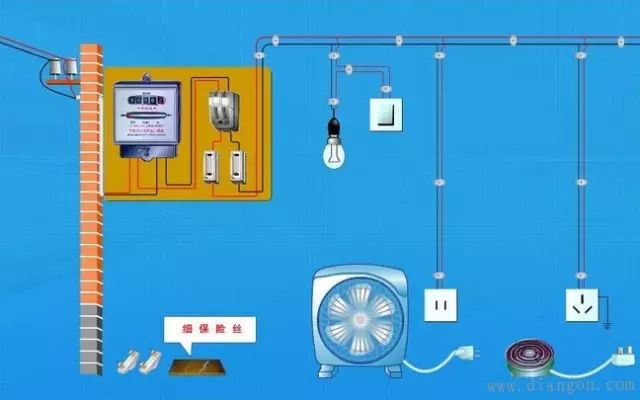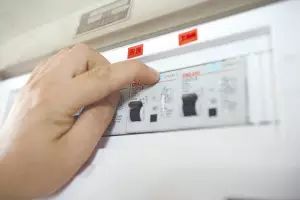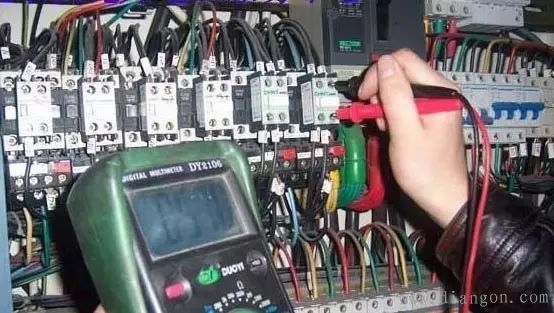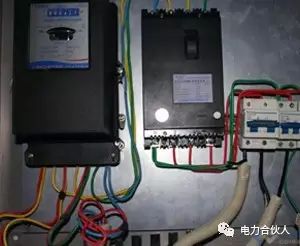As long as the leakage protector detects a difference of 30 mA between the incoming and outgoing currents, it will protect it-----tripping. It is difficult to use a leakage protector for old circuits or circuits without bushings during wiring. Even if you can use it in wet weather, it will not stop. The cause and location of leakage are difficult to find. I tell you that you only need to remove the leakage protector and replace it with an air switch of the same power (to control the live wire, and the neutral wire can be tied together at zero) and it can be used normally without any problems.
The leakage protector is an indispensable electronic component in the home circuit. When the circuit leaks or the current exceeds the rated value, it can effectively control the disconnection of the circuit to ensure the safety of people's lives and property. In daily life, the circuit will occasionally fail, which will cause the leakage protector to trip. After the trip, we must first know the reason in order to safely turn on the switch. The following editor will give you a detailed explanation of the cause of the leakage protector trip.
Causes of leakage protector tripping
The function of the leakage protector is to effectively control the disconnection of the home circuit and the occurrence of leakage and electrical accidents. Therefore, the reasons for tripping can be divided into two types, one is normal tripping, and the other is abnormal tripping.

1. Normal tripping
If a leakage switch with a rated leakage action current of 30MA has a leakage current of more than 25MA in its load, the leakage switch will trip. Since the 25MA current flows through the human body, it is safe, and there will be no electric shock death; the same will not cause danger to the circuit or electrical equipment, and the work of the electrical equipment will not produce abnormal phenomena.
2. Abnormal trip
This kind of tripping is caused by the unqualified quality of the leakage switch itself, which is divided into two types: failure to close and sometimes tripping without cause. When the leakage switch is connected to the power supply and not the load, if it cannot be closed, it must be a quality problem with the leakage switch. Do not repair it by yourself, because the repair must be carried out after the technical performance test before it can be put into use. No test equipment is used. It is not safe to use after testing.
The second category is the occasional trip, especially in the middle of the night or when there is no one in the house. This trip indicates that the anti-interference performance of the leakage switch is poor. The leakage switch with abnormal tripping should be removed and replaced with a good leakage switch.

If the leakage current of a normal trip fluctuates above 25MA, the phenomenon is similar to an occasional trip. The cause of the leakage protector trip is often caused by the aging of the wire insulation, that is, it trips when the environment is humid, and does not trip when the environment is dry. A reliable way to distinguish between such normal trips and occasional trips is to measure the insulation resistance of lines and electrical equipment. The standard stipulates that the insulation resistance of each wire shall not be less than 0.5MΩ, and the insulation resistance of electrical equipment is usually greater than 0.5MΩ. If the load connected to the leakage switch has a total measured insulation resistance of less than 8.8KΩ (220V/25MA=8.8KΩ), then a normal trip will occur.
(1) Poor installation. The lead wires of each pile head are not connected firmly and loose for a long time, which will cause the pile hair to heat and oxidize, burn the outer insulation of the wire, and emit sparks and burnt smells, resulting in line undervoltage and air switch action.
(2) There is a problem with the quality of the leakage switch itself.
(3) Does not match the load. The actual electrical load of the family is greater than the rated current of the low-voltage circuit breaker on the line. It usually occurs after newly installed or newly added high-power household appliances such as air conditioners and electric water heaters. The matching air switch must be replaced.
(4) Leakage or short circuit of electrical appliances or lines. When electrical leakage is found in the electrical appliance used, just pull out the plug of the electrical leakage fault, and then re-close the low-voltage circuit breaker to transmit electricity.
After the low-voltage circuit breaker is tripped, first disconnect all the shunts, and then close them one by one to send power. When a circuit is closed, the low-voltage circuit breaker cannot be powered on, that is, the branch is faulty, this circuit should be disconnected, and other branches should be closed for power transmission. After the faulty shunt problem is found, the power can be sent after repairing.
(5) The incoming line voltage of the power supply is too high. This is very dangerous, and it usually occurs in houses powered by the "three-phase four-wire" system. At this time, first check whether the two wires of the line are live; second, check whether the neighbors on the left and right have tripped; third, use a multimeter to measure the incoming line voltage. Do not close the low-voltage circuit breaker forcibly, otherwise the electrical appliances will be burned out, or the fire will be caused.
How to troubleshoot the cause of the leakage protector tripping?
1. Dividing line elimination method
According to the sequence of "trunk first, branch then, end last", disconnect the branch lines of the low-voltage power grid, and only conduct trial power transmission to the trunk line. If the trunk line is fault-free, the trunk line can operate normally. Then, the branch and the end are put into operation in turn. When which line is put into operation, the protector trips, and the fault point is on which line, you can focus on finding the fault point on this line.

2. Visual inspection method
Intuitively inspect the protection area, including the residual current-operated protector and the line equipment to be protected, so as to find the fault point. During patrols, the inspection should focus on the corners, branches, crossovers and other complex sections of the line and points prone to faults.
3. Numerical comparison method
Use instrumentation to measure the line or equipment, and compare the measured value with the original value to find out the point of failure.
Note: When the insulation of the neutral line of the line drops or the neutral line of the equipment is repeatedly grounded, it is easy to cause the main protection to trip frequently, but the secondary protector does not trip.

4. Trial delivery method
Mainly find the fault of the residual current operated protector itself. The specific operation method is: first cut off the power supply, then remove all the load-side leads of the residual current operated protector of the zero-sequence transformer and then close the protector.
If the protector still cannot be put into operation, it means that the protector itself is faulty and should be repaired or replaced. If it can operate normally, the protector itself has no fault, and then look for the switchboard or line. The operation method is: first cut off the load of each outlet or AC contactor. If it fails to operate, it means that there is a fault on the switchboard. Check whether the electrical, instrument and other equipment are well insulated and whether the wiring is correct; if it can operate normally, it will be explained. There is no fault on the switchboard. When it is confirmed that the fault has occurred on the external line, the branching method can be used to find the fault point.
The above is the relevant content of the leakage protector tripping reasons and troubleshooting methods. Friends who don't understand the leakage protector trip can refer to this article. Of course, safety must be the first priority. If you don't know, you can ask an electrician to come and repair it.
Zinc wire is a good anti-corrosion material,widely used in steel structure anti-corrosion,wind power tower,bridge,sluice gate,oil pipe on sea,Ductile iron pipe,extrusion division tube.
|
|
Zinc Wire,High Pure Zinc Wire,Zinc Wire Mesh,Corrosion Protection Zinc Wire
Shaoxing Tianlong Tin Materials Co.,Ltd. , https://www.tianlongspray.com
